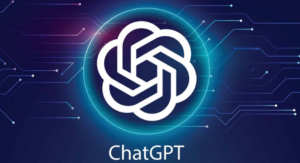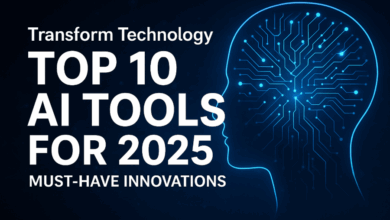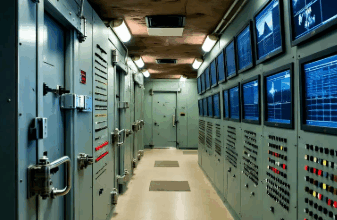AI Guardrails in the U.S.: Battling for Safe Innovation
The Importance of Establishing AI Guardrails in the U.S. for Safe Innovation
Artificial intelligence (AI) has become an integral part of our daily lives, from virtual assistants like Siri and Alexa to self-driving cars and personalized recommendations on social media. With its rapid advancement and integration into various industries, AI has the potential to bring about significant benefits and advancements. However, with great power comes great responsibility, and the need for establishing AI guardrails in the U.S. has become more crucial than ever.
AI guardrails refer to the ethical and regulatory frameworks that govern the development, deployment, and use of AI systems. These guardrails are essential to ensure that AI is used in a responsible and safe manner, without causing harm to individuals or society as a whole. The U.S. has been at the forefront of AI innovation, but the lack of clear regulations and guidelines has raised concerns about the potential risks and consequences of unchecked AI development.
One of the main reasons for establishing AI guardrails in the U.S. is to address the issue of bias in AI systems. AI algorithms are trained on vast amounts of data, and if the data is biased, the AI system will reflect that bias in its decision-making. This can lead to discriminatory outcomes, such as biased hiring practices or unfair loan approvals. To prevent such scenarios, it is crucial to have regulations in place that require companies to regularly audit their AI systems for bias and take corrective measures.
Moreover, AI guardrails are necessary to protect the privacy and security of individuals. With the increasing use of AI in data collection and analysis, there is a growing concern about the misuse of personal information. The Cambridge Analytica scandal, where personal data of millions of Facebook users was harvested without their consent, is a prime example of the potential risks of unregulated AI. By establishing guardrails, the U.S. can ensure that companies are transparent about their data collection and usage practices and that individuals have control over their personal information.

Another critical aspect of AI guardrails is the need to address the potential impact of AI on the workforce. While AI has the potential to automate mundane and repetitive tasks, it also has the potential to replace human jobs. This can lead to significant job losses and widen the gap between the rich and the poor. To prevent such a scenario, the U.S. needs to establish regulations that promote responsible AI development and encourage companies to invest in retraining and upskilling their employees.
Furthermore, AI guardrails are necessary to ensure the safety and reliability of AI systems. As AI is integrated into critical systems like healthcare and transportation, any malfunction or error can have severe consequences. For instance, a self-driving car with faulty AI could cause accidents, putting lives at risk. By establishing guardrails, the U.S. can ensure that AI systems undergo rigorous testing and meet safety standards before being deployed.
In addition to these reasons, establishing AI guardrails in the U.S. is crucial for maintaining the country’s global competitiveness. As other countries like China and the European Union are also investing heavily in AI, the U.S. risks falling behind if it does not have a clear regulatory framework in place. This could lead to a loss of economic opportunities and hinder the country’s overall progress.
In conclusion, the importance of establishing AI guardrails in the U.S. for safe innovation cannot be overstated. These guardrails are necessary to address issues of bias, privacy, workforce impact, safety, and global competitiveness. It is the responsibility of the government, businesses, and individuals to work together to create a regulatory framework that promotes responsible and ethical AI development. Only then can we fully harness the potential of AI while ensuring the safety and well-being of society.
Current Efforts and Initiatives in the U.S. to Implement AI Guardrails for Safe Innovation
Artificial intelligence (AI) has become an integral part of our daily lives, from virtual assistants like Siri and Alexa to self-driving cars and automated customer service. While AI has the potential to revolutionize industries and improve efficiency, it also raises concerns about safety and ethical implications. As a result, there has been a growing push for the implementation of AI guardrails in the United States to ensure safe innovation.
One of the main concerns surrounding AI is the potential for biased decision-making. AI systems are only as unbiased as the data they are trained on, and if the data is biased, the AI will reflect that bias in its decisions. This can lead to discrimination and perpetuate societal inequalities. To address this issue, the National Institute of Standards and Technology (NIST) has developed a framework for managing bias in AI systems. The framework provides guidance for organizations to identify and mitigate bias in their AI systems, promoting fair and ethical decision-making.
Another important aspect of AI guardrails is transparency. Many AI systems use complex algorithms that are difficult to understand, making it challenging to identify and address potential issues. The Federal Trade Commission (FTC) has called for increased transparency in AI systems, urging companies to disclose how their AI systems work and the data they use. This would allow for better oversight and accountability, ensuring that AI systems are not making decisions that could harm individuals or society as a whole.
In addition to promoting transparency, the FTC has also emphasized the need for accountability in AI systems. This includes holding companies responsible for any harm caused by their AI systems and ensuring that they have processes in place to address any issues that may arise. The FTC has also recommended that companies conduct regular risk assessments and audits of their AI systems to identify and address potential risks.
The U.S. government has also taken steps to address the safety and ethical implications of AI. In 2019, the White House issued an executive order on maintaining American leadership in AI. The order directs federal agencies to prioritize AI research and development, promote the responsible use of AI, and protect the privacy and civil liberties of individuals. It also calls for the development of AI standards and guidelines to ensure the safety and reliability of AI systems.
Furthermore, the National Artificial Intelligence Initiative Act of 2020 was signed into law, establishing a national strategy for AI research and development. The act also includes provisions for promoting the responsible use of AI and addressing ethical concerns. It also calls for the development of a national AI research infrastructure to support the advancement of AI technologies.
In addition to government efforts, many private organizations and companies have also taken steps to implement AI guardrails. For example, the Partnership on AI, a nonprofit organization, brings together industry leaders, academics, and civil society organizations to develop best practices and guidelines for the responsible use of AI. The organization has also established a certification program for AI systems to ensure they meet ethical and safety standards.
Overall, there is a growing recognition of the need for AI guardrails in the U.S. to ensure safe and ethical innovation. Efforts from government agencies, private organizations, and companies are all working towards promoting transparency, accountability, and fairness in the development and use of AI. As AI continues to advance and become more integrated into our lives, it is crucial to have these guardrails in place to protect individuals and society as a whole.
Potential Challenges and Future Considerations for AI Guardrails in the U.S. to Ensure Safe Innovation
Artificial intelligence (AI) has become an integral part of our daily lives, from virtual assistants like Siri and Alexa to self-driving cars and personalized recommendations on social media. As AI continues to advance and become more prevalent, there is a growing concern about its potential risks and consequences. In response, many countries, including the United States, have started implementing AI guardrails to ensure safe innovation. However, as with any new technology, there are potential challenges and future considerations that must be addressed to effectively regulate AI in the U.S.
One of the main challenges in implementing AI guardrails is defining what exactly constitutes AI. The term itself is broad and encompasses a wide range of technologies and applications. This makes it difficult to create a one-size-fits-all approach to regulating AI. For example, a self-driving car and a virtual assistant may both fall under the category of AI, but they have vastly different capabilities and potential risks. Therefore, it is crucial to have a clear and comprehensive definition of AI to effectively regulate it.
Another challenge is the rapid pace of AI development. As technology continues to advance at an unprecedented rate, it can be challenging for regulators to keep up. By the time a law or regulation is passed, AI may have already evolved beyond its scope. This can lead to outdated regulations that are no longer effective in ensuring safe innovation. To address this challenge, there needs to be a continuous and collaborative effort between regulators and AI developers to stay updated on the latest advancements and potential risks.
Additionally, there is a concern about the potential bias in AI algorithms. AI systems are only as unbiased as the data they are trained on. If the data used to train an AI system is biased, it can lead to discriminatory outcomes. For example, a facial recognition system trained on a dataset that is predominantly white may have difficulty accurately identifying people of color. This can have serious consequences, such as wrongful arrests or denial of services. To prevent this, there needs to be a focus on diversity and inclusivity in the data used to train AI systems.
Another consideration for AI guardrails is the potential impact on job displacement. As AI technology continues to advance, there is a fear that it will replace human workers, leading to job loss and economic instability. This is a valid concern, and it is essential to have measures in place to support workers who may be affected by AI. This could include retraining programs or policies that require companies to invest in their employees’ skills and education.
Furthermore, there is a need for transparency and accountability in AI systems. As AI becomes more complex and autonomous, it can be challenging to understand how decisions are being made. This lack of transparency can lead to mistrust and skepticism towards AI. To ensure safe innovation, there needs to be a way to explain and justify the decisions made by AI systems. This could include regulations that require companies to provide explanations for their AI algorithms or the creation of independent oversight committees to review and monitor AI systems.
In conclusion, while AI guardrails are a crucial step in ensuring safe innovation, there are potential challenges and future considerations that must be addressed. These include defining AI, keeping up with its rapid development, addressing bias and job displacement, and promoting transparency and accountability. It is essential for regulators, AI developers, and other stakeholders to work together to create effective and comprehensive regulations that balance innovation with safety. With careful consideration and collaboration, we can harness the full potential of AI while mitigating its risks.




